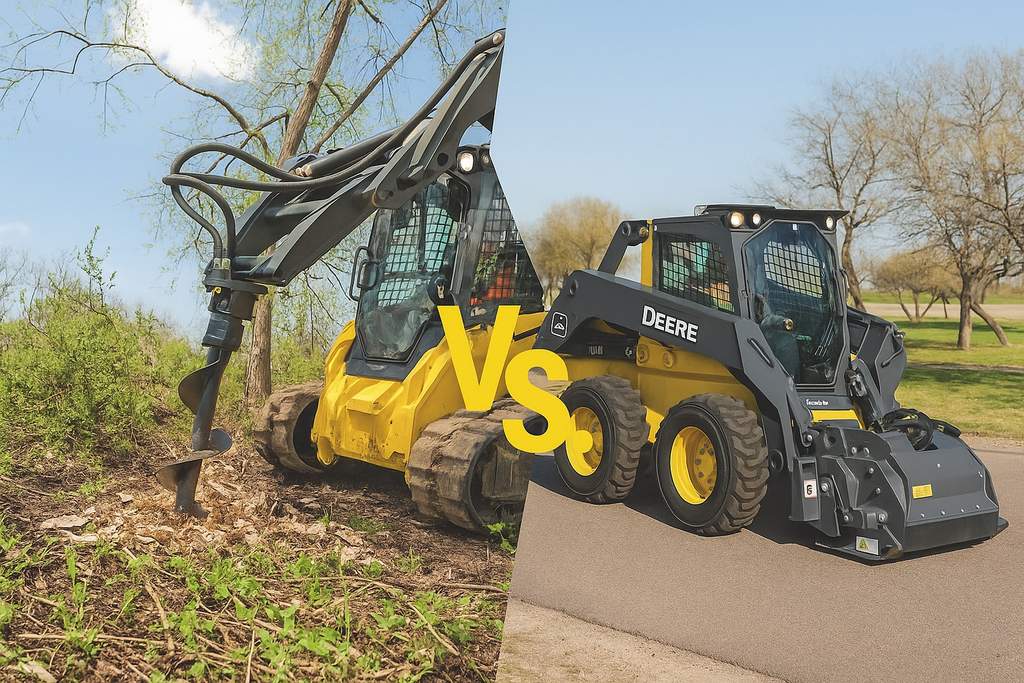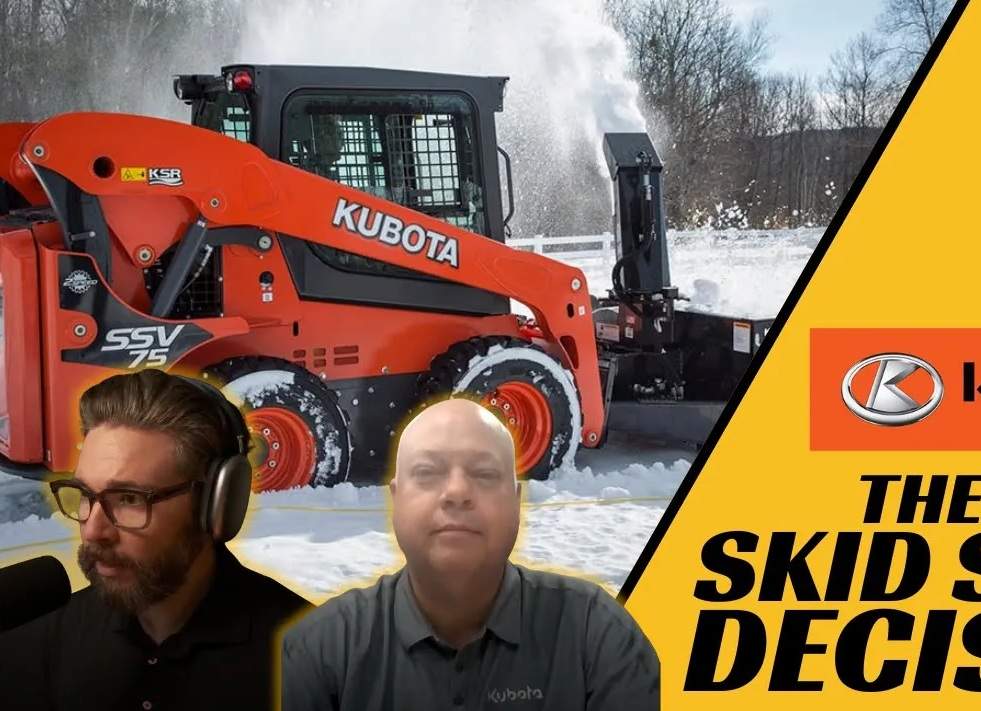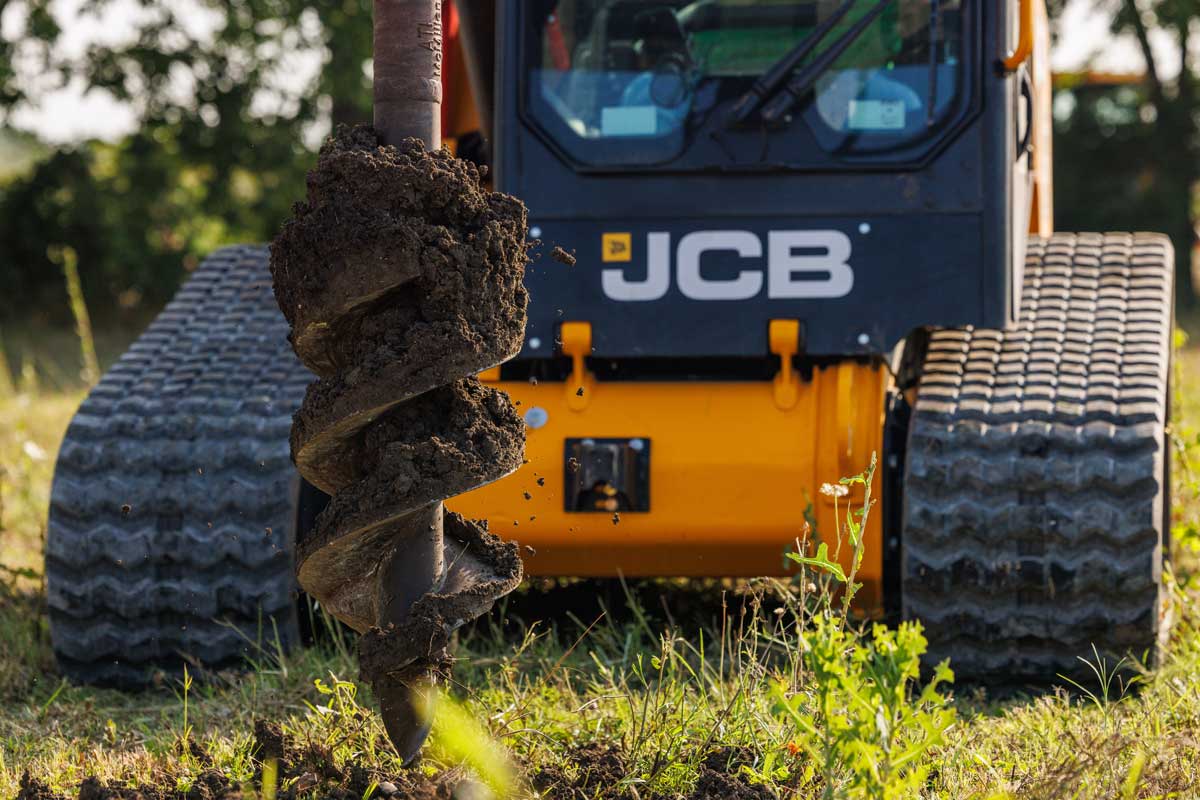The Journey to Clean Power
Perkins Discusses the Progress and Pitfalls of Tier 4 Diesel Engine Technologies
By Keith Gribbins
Direction is just as important as speed, but sometimes we’re so busy looking at our speedometers that we miss the important milestones we’ve passed. It’s a popular regret that comes with meeting the technology demands of today’s “now generation.” In the off-highway diesel engine industry (for instance), high-tech solutions are actually expected on regular deadlines. The EPA has been mandating the creation of ultra-clean diesel engine emissions technologies for more than two decades — each development “Tier” set to stricter time frames — coming to a head with Tier 4 Final in 2014 and beyond. It’s an impressive process that doesn’t get enough appreciation, another sentiment we recognized when visiting the engine experts at Perkins in Peterborough, England, in April.
Perkins was celebrating the production of its 20 millionth engine (a 1206 two-stage turbo Tier 4 diesel), but that milestone seemed subtle compared to the discussions aimed at the high technologies being implemented to meet emissions-compliant diesel regulations. With a focus on smaller, off-highway diesels, Perkins is engineering many of the next gen power plants that our readers will be using in their new compact equipment — from skid steers to generators — so we took the opportunity while visiting Peterborough to interview and discuss with Perkins how and why diesel engines are changing and how that affects you, the contractor.
“Machine operators and end-customers expect the highest levels of performance and productivity,” explains Martin Parker, technical manager with Perkins. “In conjunction with that, they expect extremely high levels of quality and reliability. Now with today’s emissions standards, we can also give those customers some of the cleanest diesel engines ever engineered, but we’re also dramatically changing how the engine works — in both size and systems. So our job is to produce a robust diesel engine that meets these new requirements, but also retains the performance, productivity and quality that they’ve come to expect. I think we’ve done that and more.”

A Perkins 1200 Series Tier 4 engine. Note the sizable after-treatment systems that sit on top of the engine.
Tier Regulation Refresher
Diesel engine technology has come a long way in the last 120 years. With its low cost and high efficiency, it goes without saying that diesel engines have become standard for off-road construction equipment. Actually, the only real disadvantage to diesel engine technology has been that its emissions contain high levels of particulate matter and pollutants, which is primarily due to the makeup of the fuel itself and the process by which the engines are designed to burn it.
Since the Clean Air Act of 1990, diesel engine manufacturers of construction equipment have been designing new engines to comply with government-imposed regulations aimed to curbing those pollutants. These Tiers (1, 2, 3 and 4) are EPA terms for the phased-in implementation of increasingly stringent diesel engine emissions regulations that target four main regulated emissions — carbon monoxide, hydrocarbons, particulate matter (PM) and nitrogen oxides (NOx). The most intensive of these EPA Tier regulations arrived in 2012 (called Tier 4), aimed at cutting emissions levels from construction, agricultural and industrial diesel-powered equipment by more than 90 percent. These new Tier 4 regulations are split into two standards called Interim and Final, and these standards will radically change the way construction machinery works because of the implementation of sizable, out-of-the-cylinder, after-treatment systems.
“Tier 4 engines are becoming extremely complex,” says Richard Webb, product marketing manager for Perkins. “There’s as much technology on the after-treatment and the electronic controls that go with it then the rest of the engine put together. To meet modern emissions standards, there are a number of different technologies you can use, and any one of them will deliver the emission performance, but to get the best off-road performance, you begin to blend those technologies. By balancing the strengths of the technologies available to deliver durable performance, you end up with a technology that actually meets the needs broadly of what we’re about — general industrial and construction equipment.”
These off-highway diesel engine solutions must not only meet global emissions standards, but also deliver increasing performance criteria. Why? For starters, these high-tech, emissions-compliant diesel engines are a lot more expensive (in raw cost), and engine manufacturers are being forced to up the efficiencies and specs to balance out that cost — with things like fuel efficiency, engine downsizing, horsepower increases and the addition of electronics and maintenance features for the operator and mechanic. In fact, many of the new machines released at CONEXPO-CON/AGG were simply Tier 4 “revamped” units; machines basically with new emissions-complaint engines, but also with increased bonus specs and features to smooth over symptoms of sticker shock from contractors looking to purchase new.
To accomplish this increasingly difficult balancing act (pioneering technology vs. increasing price vs. added efficiencies), Perkins has had a team of engineers designing solutions for Tier 4 Interim and Final for more than a decade. In fact, it’s been the company’s largest investment ever in an engine program and includes programs and initiatives like its Technology Integration Workshops (TIW), in which Perkins invites original equipment manufacturers (OEMs) into its onsite Collaboration Center in Peterborough to work side by side with its engineers to create the optimal solution for each engine application. The TIW program has overseen more than 500 engine/machine installation projects for more than 150 global OEMs, but the time and money benefits are being seen and felt beyond those English engine bays.
“This program is something that we believe is a really big differentiator from us and the competition,” explains Adrian Talbot, Marketing Centre of Excellence manager at Perkins. “We do believe we’re one of the leaders in this field, although there are a number of competitors out there saying the same thing today. Either way, we led the market with this type of collaboration with our customers in order to integrate the engine into the machine to provide the best performance. This center we’re in this afternoon was custom built so these collaborations could take place. These workshops generally take two to three days, and it’s a really concentrated session over those two to three days, but we can ultimately reduce the development time by the equipment manufacturer up to six months — within their product development program.”
Emission Technologies Are Merging
In today’s competitive construction industry, it’s safe to say every reputable diesel engine manufacturer must work closely with its OEMs to help provide them with the optimal engine solutions. But those OEMs also want clear differentiators in terms of overall machine performance and specs, on top of ensuring that end-users gain a range of benefits from improved productivity in their engines. Interestingly, the unique paths to meeting Tier 4 Final are all merging, so basically everyone is solving their “unique client needs” with a lot of the same technologies. It really depends on the combination of these technologies, which can give or take away certain benefits.
These five technologies will be essential in meeting Tier 4 Final (amongst other previously implemented technologies from high-pressure, common-rail fuel systems to fixed geometry turbochargers):
Diesel particulate filters (DPFs) — DPFs are through-the-wall flow devices that trap and hold PM in the exhaust. With the help of a catalyst, the DPF cleans or “regenerates” by oxidizing the trapped PM. There are two types of regeneration: passive and active.
Cooled exhaust gas recirculation (EGR) — Lowering an engine’s peak combustion temperature is one way to lower NOx. EGR recirculates exhaust gas by mixing it with incoming fresh air. This process reduces oxygen content, lowering combustion temperatures and reducing NOx. Cooled EGR includes the cooling of the exhaust gas by passing it through a heat exchanger prior to recirculation.
Selective catalytic reduction (SCR) — This after-treatment technology reduces NOx emissions by using a urea-based additive, sometimes referred to as DEF. The ammonia in the urea mixes with engine exhaust gases in the SCR catalyst, converting NOx to nitrogen and water vapor.
Diesel exhaust fluid (DEF) — SCR systems utilize DEF to reduce NOx. DEF is made up of 32.5 percent urea and 67.5 percent de-ionized water. The ammonia in the urea mixes with engine exhaust gases in the SCR catalyst to convert NOx to nitrogen and water vapor.
Diesel oxidation catalyst (DOC) — A DOC is a flow-through after-treatment device that reacts with exhaust gases to reduce carbon monoxide, hydrocarbons and some PM.
Some construction equipment (particularly larger machinery) will come equipped with all five of these technologies, used in congress to ensure emissions compliance. In compact equipment, some of these after-treatment systems can be deliberately avoided or embraced to avoid cost or add efficiencies. For example, SCR systems are only usually used for diesel engines from 75 hp (56 kW) on up, which allows some compact equipment OEMs to avoid the use of DEF (an extra liquid and expense) if their engines stay small. Manufacturers are definitely trying to downsize or keep certain engines below that 75-hp threshold.
A more controversial initiative might be the use of a DPF. Many small engine manufacturers are touting non-DPF solutions, which they say comes with reduced inconvenience and maintenance for the customer. At CONEXPO, Doosan Infracore Engine Business Group specifically introduced three new compact diesel engine models to the market, boasting non-DPF solutions. “A non-DPF engine design provides a simpler design; prevents the need for a larger mounting space; eliminates ash cleaning; enhances fuel economy; eliminates risk of thermal damage and reduces service claims,” the company noted in its press release.
For Perkins, the DPF philosophy depends on the application, and it offers a range of non-DPF and DPF solutions in the 75- (56-) to 175-hp (130-kW) range.
“We offer a version both with and without a DPF, giving the OEM a chance to select the right technology for the needs of each specific application,” explains Martin. “In using a DPF and in using SCR, what we’re doing is providing technologies that take care of cleaning up combustion that happens within the engine. So if you bolt on a DPF and bolt on SCR, it allows you to relax the level of emissions you generate in the engine. In doing that, you’re able to trade off some of that relaxation against improved performance. On the flip side, as soon as you offer an engine that doesn’t have a DPF, you have to clean up the combustion and meet the regulatory limits of NOx, soot and hydrocarbons through the combustion process that you develop. Because that’s more difficult to do in cylinder, then you have to trade off against fuel consumption specifically and transient response.”
Of course, a DPF also requires another fairly new after-treatment process known as regeneration. This is the process of removing accumulated soot from the air filter either “passively” (by using the engine’s exhaust heat or by adding a catalyst to the filter), or “actively” (by introducing very high heat into the exhaust system, usually fuel, to burn off accumulated particulate matter).
How that diesel engine and after-treatment is packaged and delivered will also be of monumental importance. Because these after-treatment systems are so large and complex, the internal guts of a machine must be rearranged to fit everything properly. That means OEMs are looking for engine partners that are flexible and diverse in their installation options, while equipment owners are looking to retain easy access to maintenance points in an ever-congested engine compartment.
“You start off by having a very wide range of options that can be applied to the core engine,” says Webb. “I think that our success is very much based on the variety we can offer off the shelf. We are unique, I believe, in making sure an engine can be supplied from here with all the connections, all the cables, all the tanks, all the heated lines, everything that is needed to install into an OEM’s application. Things like DEF tanks, which are the secondary fluid tanks that engines require. Often that is something that needs to be sourced separately. We make sure it’s part of the engine when we sell it.”
Tier 5?
Whether you use a DPF might be a non-issue in the near future, at least according to the fine folks at Perkins, which cited an upcoming Euro reg that might require everyone to use them. Right now, the European Commission has been working on a new Stage V (like Tier 5) for non-road emissions regulations, and something similar could potentially be issued in the United States. The proposed off-road Stage V regulations are slated to begin in 2019 if implemented and further attack the amounts of PM exiting a machine’s exhaust system, which in the United States was reduced by 90 percent from Tier 3 to Tier 4 Final.
The regulation would also widen the scope of regulated engines including compression ignition (CI) engines below 19 kW, CI engines above 560 kW, stationary engines, spark ignition (SI) engines above 19 kW and even snow mobiles. The regulation looks to also strengthen the emission limits for constant speed engines, inland waterway vessels and for 19- to 37-kW engines, while (as mentioned) adopting very strict particle number limits for CI engines. The EPA has not made any indication that it would adopt similar regulations in America, but it’s a possibility.
“We had a very significant reduction in particular matter and NOx leading up to Tier 4 Final, and we’re going somewhat in the same direction with particulate matter for EU Stage V,” explains Robin Woodward, technical manager with Perkins. “The technology mandated largely by particle number count will mean that machines will pretty much need a DPF. We’re not saying that’s an absolute certainty because it’s five years hence, however, you need to have the line of sight of the technology required. To do that without a filter and maintain performance at this point is a big stretch.”
What happens beyond 2015 is still uncertain, but we get the sense that equipment manufacturers and engine makers feel they have already contributed enough technology, time and money to the improvement in diesel engine air quality. Governments might feel differently, but as of now, you have to be impressed with what engine manufacturers have delivered. It’s true that many equipment owners will balk at Tier 4 engines for their cons — things like higher initial cost, susceptibility to dirty diesel fuel and the need for regen — but the fuel savings alone outweigh those oppositions. We’re hearing about fuel savings of 10, 20 and even 30 percent in certain machines and duty cycles.
Tier 4 Final compliance has easily become one of the biggest forces driving innovation in construction equipment technology today, so we will keep you updated as more advanced fuel consumption and after-treatment technologies become available on the market.
Keith Gribbins is managing editor of Compact Equipment, based in Brecksville, Ohio.




